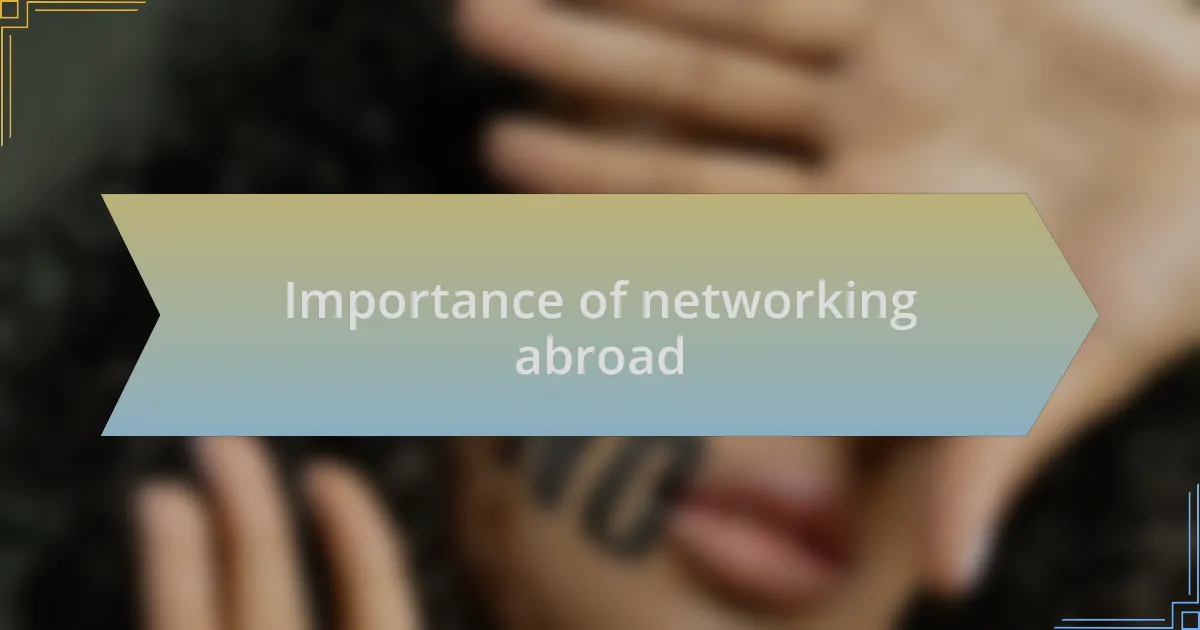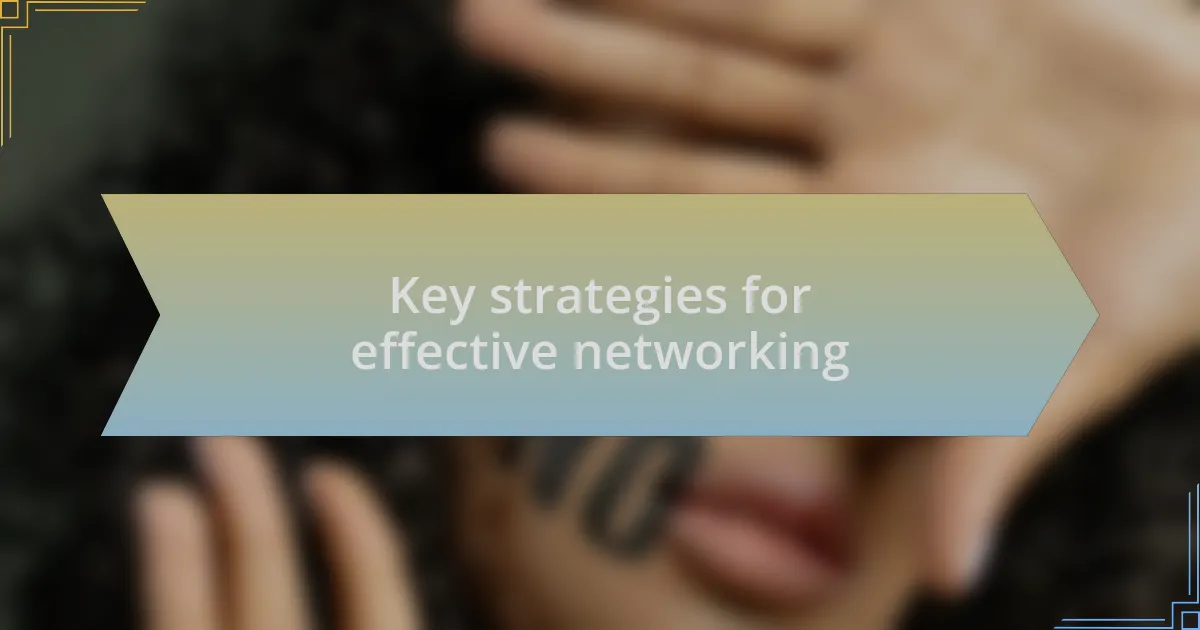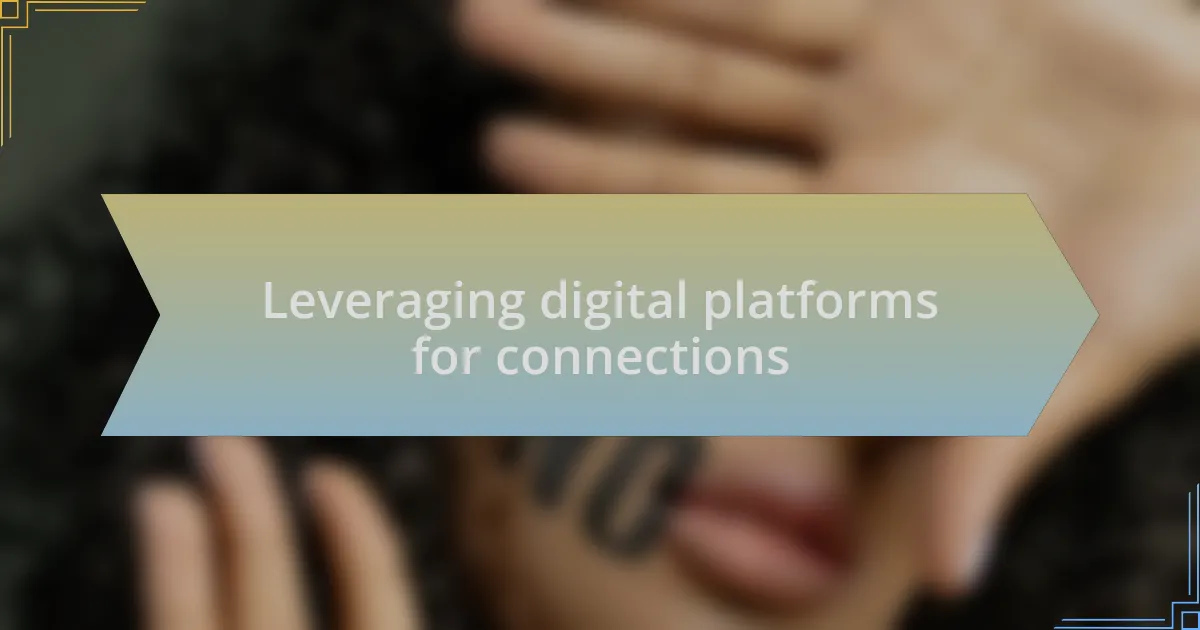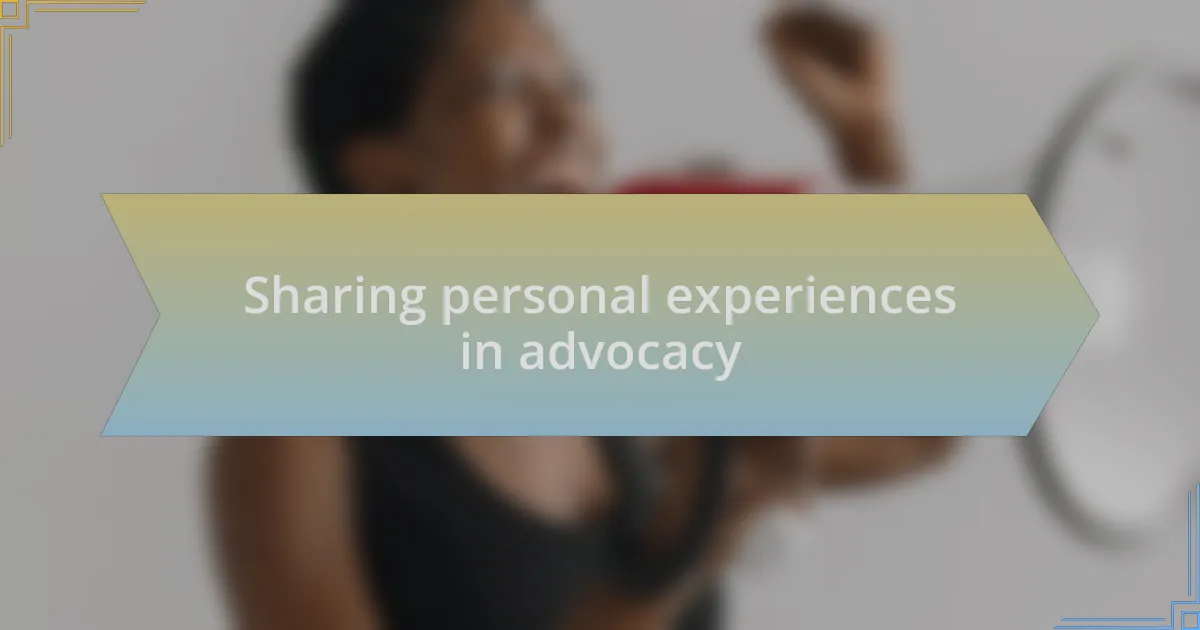Key takeaways:
- Human rights advocacy involves empowering marginalized voices and understanding that every small action contributes to larger change.
- Networking internationally provides fresh perspectives and collaborative opportunities, enhancing the overall impact of advocacy efforts.
- Authentic communication and follow-ups are vital for building and maintaining meaningful professional relationships.
- Sharing personal narratives fosters deeper connections and motivates collective action, emphasizing the importance of creating safe spaces for storytelling.

Understanding human rights advocacy
Human rights advocacy is fundamentally about speaking up for those who cannot speak for themselves. I remember my first experience attending a rally—seeing a diverse group of people united for a common cause was incredibly moving. It made me realize how much power collective voices hold in driving change.
Advocacy is more than just awareness; it’s about action and commitment. Reflecting on my journey, I often ask myself, “What can I do today to make a difference?” That prompt pushes me to engage in local community efforts and connect with others who share the same passion for justice.
The journey can be challenging, filled with moments of doubt and struggle. There was a time when I felt overwhelmed, questioning if my efforts were impactful at all. Yet, through conversations with fellow advocates, I learned that every small action contributes to a larger movement. Understanding this interconnectedness is vital in human rights advocacy, as it reinforces our shared responsibility for creating a more just world.

Importance of networking abroad
Networking abroad is crucial for anyone involved in human rights advocacy. When I attended an international conference in Europe, I was struck by the depth of conversation that emerged. It wasn’t just about exchanging business cards; it was about sharing stories and learning from each other’s struggles and victories. Have you ever felt that connection with someone who understands your fight? That’s what makes global networking invaluable.
Building relationships with advocates from different regions opens doors to new perspectives and strategies. I recall meeting a fellow activist from South America who shared innovative techniques for grassroots mobilization. Listening to her experiences inspired me to adapt some of her approaches in my own initiatives. Imagine how much you could learn from engaging with activists around the world!
Moreover, establishing these networks can amplify your voice and efforts. It’s not merely about personal gain; it’s about strengthening our collective impact. I often find myself reflecting on how a simple introduction can lead to a collaborative project that champions human rights causes on a much larger scale. Isn’t it incredible to think about the potential for change that lies in our connections?

Key strategies for effective networking
When it comes to networking effectively, I’ve learned that authenticity is key. Approaching conversations genuinely can create trust from the very start. I remember during a workshop in Asia, I opted for a candid introduction instead of the typical formalities. The result? It opened up dialogue that led to a collaborative initiative addressing mental health in underprivileged communities. Have you tried being your true self in professional settings?
Another powerful strategy is to follow up after an initial meeting. I often send a brief message or share a relevant article that I think might interest the person I met. This simple act not only reinforces our connection but often leads to deeper discussions later on. Have you considered how a thoughtful follow-up could enhance your relationships?
Lastly, leveraging social media is incredibly effective for maintaining and building your network. I’ve used platforms like LinkedIn to share insights about my experiences and engage with others in the field of human rights. Connecting online made it easier for me to seek advice and share resources. Have you explored how online platforms can extend your reach beyond borders?

Building relationships with local advocates
Building relationships with local advocates requires more than just surface-level engagement. I recall attending a community meeting in a remote village, where I took the time to listen deeply to the local advocates’ stories. Their passion and commitment were infectious, and I realized that by valuing their insights, I could contribute much more than just my external perspective. Have you ever felt that true connection when you let others share their experiences?
Being present in local contexts is equally crucial. During my travels, I made it a point to join in on local events and initiatives. This not only helped me understand the nuances of their struggles but also fostered a genuine camaraderie. There was that one afternoon spent cleaning up a local park with advocates; the laughter and shared purpose created bonds that I cherish to this day. Have you considered how participating in local efforts could bridge gaps and strengthen relationships?
Finally, it’s essential to show appreciation for the work done by local advocates. I make it a habit to send thank-you notes or small tokens of gratitude after collaborative efforts. This recognition makes a world of difference, reinforcing the idea that I see and value their contributions. How often do you take a moment to acknowledge the hard work of those around you? It can transform not just relationships, but the entire collaborative atmosphere.

Leveraging digital platforms for connections
Digital platforms have been a game changer for me in networking abroad. I vividly remember a time when I joined a virtual advocacy forum that united activists from different parts of the world. The discussions were lively and thought-provoking, often sparking a sense of belonging that I hadn’t expected. Have you ever found a community online that felt like home, despite the physical distance?
Through social media, I’ve connected with local leaders who shared their work in real-time, showcasing challenges, successes, and the cultural context of their advocacy. I think back to a powerful Twitter thread about a grassroots movement in Central America; engaging with their updates not only kept me informed but allowed me to offer support and build trust. Has there been a moment when you felt moved to contribute to something much larger than yourself through a simple comment or message?
Additionally, I often leverage platforms like LinkedIn to create meaningful connections. One memorable encounter stemmed from a casual exchange with an advocate I admired; we ended up collaborating on a project that bridged our respective networks. It’s incredible how a single online interaction can lead to real change. What’s your experience with using digital connections to foster tangible outcomes? It might just lead you to unexpected collaborations and friendships.

Sharing personal experiences in advocacy
Sharing personal experiences in advocacy can truly deepen our understanding of the challenges we face. I recall attending a local human rights conference abroad where a fellow advocate shared her harrowing journey escaping political oppression. Her story resonated deeply and reminded me of the importance of listening—sometimes, it’s the vulnerability of our narratives that unites us in our fight for justice. Have you had moments where another’s experience sparked a fire in your own advocacy work?
There’s an inherent power in storytelling that I’ve discovered during my travels. In a small café in Italy, I met a refugee who passionately described his struggle for freedom. His narrative, steeped in raw emotion, not only humanized the statistics I had read but also compelled me to take action. I often think about how our personal stories can serve as catalysts for change. When has a shared experience pushed you to reconsider your approach to advocacy?
While I have shared my own experiences with others, I believe it’s equally important to create spaces for others to voice their journeys. When I hosted a workshop in South Africa, we dedicated time for participants to share their stories. The bonds formed that day were palpable; I learned that creating an environment where everyone feels safe to share can amplify our collective impact. Have you created such spaces in your work, and how has that enriched your advocacy efforts?